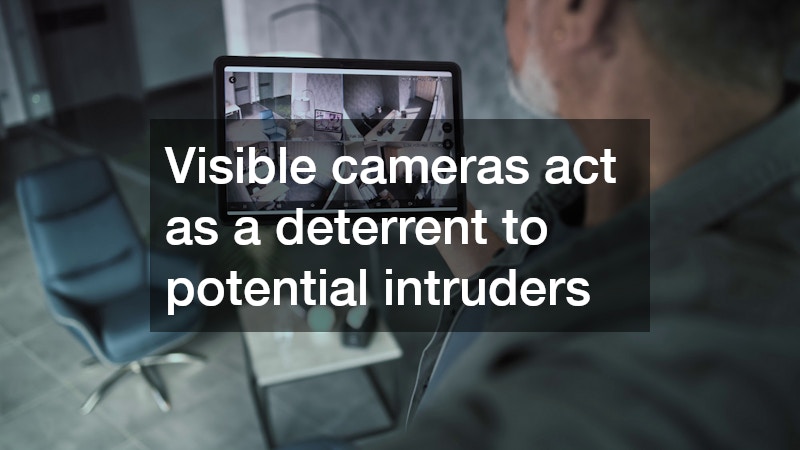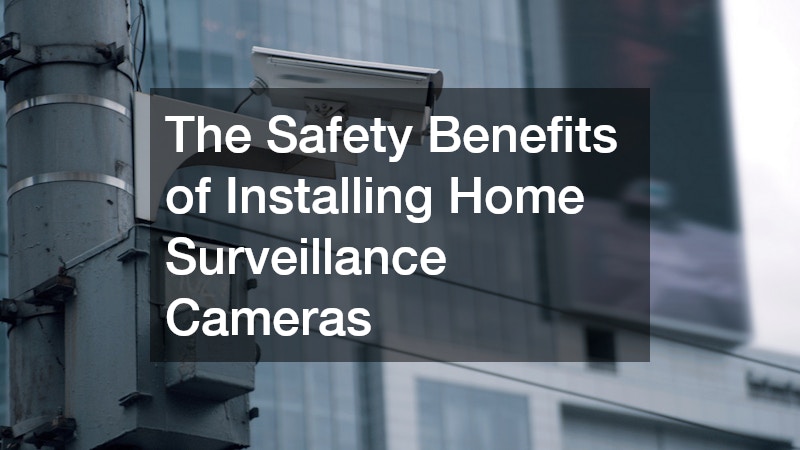In recent years, the demand for enhanced home security systems has increased. Installing home surveillance cameras has become one of the most effective ways to ensure safety and peace of mind.
Deterring Crime
Visibility of Surveillance Cameras
Visible cameras act as a deterrent to potential intruders. When criminals see surveillance devices around a home, they are less likely to attempt a break-in.
The overt placement of cameras signals to potential offenders that they are being watched, effectively discouraging any criminal behavior before it starts.
The psychology behind the deterrent effect is straightforward. Potential burglars and vandals are typically opportunistic by nature, seeking out easy targets with minimal risk. The mere sight of cameras suggests heightened security measures are in place, nudging them to reconsider their actions. Many studies have reiterated the correlation between visible security systems and reduced crime rates in residential areas.
Moreover, strategic placement of cameras can further enhance their deterrent capabilities. Entry points such as doors, windows, and driveways should be prioritized for camera placement. This not only maximizes the visibility of the cameras but also deters any intention to explore vulnerabilities around a property.
Psychological Impact on Criminals
The presence of cameras induces a fear of getting caught, thereby reducing criminal activity. Knowing they might be under surveillance, potential offenders experience heightened anxiety about the possibility of being identified and prosecuted. This psychological barrier is often enough to discourage criminal endeavors.
With the advancement of technology, modern surveillance cameras are equipped with features such as high-definition clarity, facial recognition, and motion detection. Criminals are aware that such technologies can provide detailed evidence, increasing the likelihood of their capture. The awareness of being constantly monitored tends to alter criminal mindsets, pushing them towards giving up planned illegal activities.
Constant surveillance not only discourages potential offenders but also helps in decreasing repeat offenses. When individuals are caught and understand the risks and evidence associated with surveillance footage, it discourages them from indulging in future wrongdoings, not just at the specific location but elsewhere as well. This overall reduction in crime helps create safer communities.
Community Awareness
Cameras help to create a safer community environment, encouraging neighborhood vigilance. The presence of surveillance systems serves as a visual reminder about personal and collective safety, fostering a community-wide culture of caution and vigilance.
Many neighborhoods have embraced the collective approach of installing visible security cameras. This not only enhances individual home security but also contributes significantly to the protection of the entire neighborhood. As more homes utilize such systems, the entire area becomes less attractive to criminals. Safety measures taken individually can yield community-wide benefits, effectively creating a web of security.
Furthermore, neighborhood organizations can leverage surveillance systems for communal safety initiatives. Sharing footage or suspicious activities can greatly aid in understanding and addressing local crime patterns. Enhanced community vigilance leads to quicker responses to suspicious activities, facilitating a significantly faster intervention.
Choosing the Right Home Surveillance System
Types of Cameras
Understanding different types and functionalities helps in selecting the right equipment for your needs. From basic bullet cameras to advanced PTZ (pan, tilt, and zoom) cameras, the market offers various options tailored to distinct security goals and environmental factors.
Bullet cameras, which are long and cylindrical, are ideal for long-range viewing. Dome cameras, with their lens enclosed within a dome, are well-suited for discrete indoor monitoring. Specialized options, like thermal imaging and night-vision cameras, are instrumental in low-light conditions, enhancing the surveillance utility even in the dark.
The choice of cameras should reflect the specific surveillance needs of the homeowner, considering factors such as location, light conditions, and integration with existing security setups. A clear understanding and selection process ensures that the system operates at its full potential, providing optimal utility and coverage.
Features to Consider
Key features like night vision, motion detection, and remote access should be considered. These attributes not only enhance the overall performance of the surveillance system but also adapt it to cater to specific security requirements.
Night vision utilizes infrared technology, enabling cameras to capture images in complete darkness. Motion detection minimizes data storage and bandwidth usage by activating recording only when movement is detected, thus increasing efficiency. Remote access capabilities allow homeowners to monitor their property in real time from anywhere globally, offering a layer of convenience and immediacy.
Incorporating these features into a surveillance system greatly enhances its ability to provide comprehensive coverage. Evaluating personal security needs and integrating the appropriate features will ensure that homeowners optimize their investment in home security technology.
Installing home surveillance cameras offers numerous safety benefits, including crime deterrence and financial savings. By carefully selecting and maintaining these systems, homeowners can enjoy enhanced security while respecting privacy and legal standards. Surveillance systems don’t just enhance security; they foster assurance that one’s home and community are safeguarded against potential threats. Wisely implemented solutions contribute significantly to striking a balance between safety and privacy.






